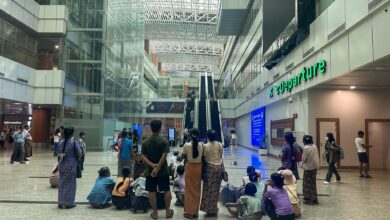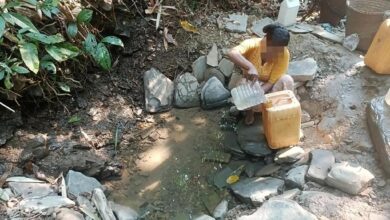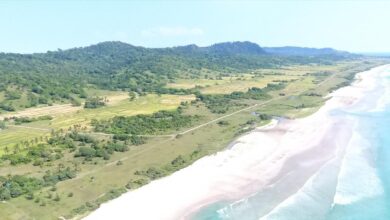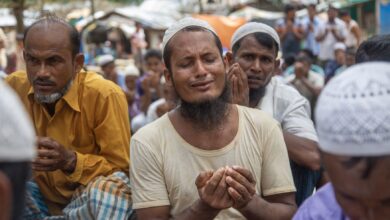
San Lwin, a resident of Yangon’s North Okkalapa Township, was hesitant about sending his two sons back to school. But after a two-year pause in their education, he decided it was finally time for them to return to the classroom.
Like many parents in Myanmar, he had kept his children at home after the February 2021 coup because of his opposition to the newly-installed regime. It was not a decision that his family took lightly.
“Their grandmother cried and begged us to send them back to school, but we had already made up our minds,” said San Lwin, who is a 40-year-old daily-wage earner at a rice shop.
Two years later, however, he was ready to compromise on his principles, prompted by his eldest child’s decision to abandon her education altogether.
His daughter, now 18, was in the 11th grade when the military seized power. After losing two years of schooling, she opted to take a job at a garment factory rather than attempt to catch up on all that she had missed.
San Lwin wasn’t happy about this decision, but felt there was little he could do about it.
“It’s not like we could beat her and force her to go to school. So we just let her work, as that’s what she wants to do,” he said.
But he didn’t want his two sons, aged 14 and 7, to fall any further behind in their education and end up in the same situation as their big sister. So he finally relented and enrolled them at the school in their ward.

Parents under pressure
San Lwin is not alone. According to official figures, there were some 5.2 million children in school in Myanmar in 2022, up from a mere 2.3 million who enrolled when schools were reopened in November 2021 in the wake of the Covid-19 pandemic and the coup. That number has increased to more than six million in the current academic year, the figures show.
For many who returned, it was simply a matter of having no other option. While some wealthier families were able to send their children to private schools, most people taking part in the school boycott couldn’t afford to do this. Nor were many poor families able to take advantage of the online education program offered by the shadow National Unity Government (NUG), for the simple reason that it depended on access to the internet.
But it wasn’t just a lack of alternatives that drove many to send their children back to junta-controlled schools. Parents were also pressured to comply with the regime’s efforts to restore an air of normalcy after unleashing chaos by seizing power from the country’s elected government.
This was done in part through other government departments and organisations under the influence of the military. Local administrators, police, and even the fire department did their part to urge parents to send their children back to school, as did the Myanmar War Veterans’ Organisation, the Myanmar Red Cross Society, and the Young Men’s Buddhist Association. Mothers receiving pre- and postnatal care at public clinics were also targeted if they had school-age children.
In some cases, “friendly reminders” to parents about their responsibilities to their children were not so friendly, according to San Lwin.
“Sometimes public health officials who came to check for mosquito larvae in water containers or to educate people about cholera and diarrhoea would slip in a comment about not having ‘unrealistic expectations’ and say that if we kept our children out of school for too long, they might not be able to get back in in the future,” he said.
“In some cases, we were even warned that we could be arrested if we persisted in keeping our children out of school,” he added.

‘I almost walked out’
Re-registering his children also proved to be an intimidating experience for San Lwin. He said he had to pass four fully armed soldiers on his way to the enrolment office, where teachers grilled him about the reasons for his children’s two-year absence from school.
“They wanted to know why I didn’t send my kids to school with the other children from the neighbourhood. At first they refused to give me an application form. Then they asked me if I was a member of the NLD,” he said, referring to the ousted ruling party, the National League for Democracy.
He said that when he explained that the family was having financial problems, one of the teachers snapped back at him that public education was free. Controlling his temper, he said he would still have to pay for his children’s clothes, school supplies, and transportation if they were going to school.
“I almost tore up the application forms,” said San Lwin. “I almost walked out of there without enrolling my sons.”
But having made up his mind to go through with his decision, he didn’t argue. When told that he would have to provide letters of recommendation from his ward’s administration office and his sons’ previous school, he simply agreed to do as he was told.
The letters from the school, which had to be submitted along with certificates of completion, were sealed, he said, meaning that he didn’t know what information they contained about his family or their reasons for keeping the two boys out of school.
In addition, San Lwin and his wife had to provide copies of their national registration cards and sign a 15-point pledge.
“My older son is 14 years old now, so he’s getting quite tall. According to the pledge they made us sign, we have to make sure that he doesn’t get involved in politics,” said San Lwin.

Below expectations
In February of last year, junta leader Min Aung Hlaing was forced to admit that the number of students returning to school was far lower than the 10 million expected to enrol.
Speaking at a meeting with his cabinet members in Naypyitaw, he blamed the low enrolment rate on the ongoing “instability” in the country and a lack of teachers.
This reflected the fact that, as the NUG announced last year, more than half of the country’s roughly 400,000 public-sector educators had joined the Civil Disobedience Movement (CDM) against military rule.
While the disruption of classes has been greatest in conflict-hit areas, Min Aung Hlaing lamented that even “peaceful” areas under his regime’s control have also shown low attendance.

As if to compensate for the shortfall in the number of students showing up at junta-controlled schools, the regime has claimed a dramatic increase in matriculation rates, based on examinations held despite drastically curtailed teaching hours.
According to the figures released by the regime earlier this month, 46.88% of those who took the matriculation exam in 2022 passed, a rate that rose to 67.87% this year. Even Sagaing Region, which has been heavily affected by more than two years of armed conflict, recorded a 65% pass rate. This is much higher than the 32% who passed under the NLD government.
But what these numbers ignore is that there were only around 300,000 matriculation candidates in 2022 and just over 160,000 in 2023, compared to the nearly 900,000 who took the exam when the NLD was in power.
In May, just ahead of the June 1 start of the new academic year, the regime introduced a new private education law to ensure that even schools not under its direct control fall in line with official policy.
Violations of the law, which prohibits discussing politics and political parties and “actions that can threaten the stability and security of the nation,” carry fines of 3-5 million kyat or six months to a year in prison.
Last year, the junta closed several private schools in Naypyitaw for allowing such “illegal activities” on their premises.
Schools under attack
Meanwhile, the NUG continues to develop its own “interim” education system as it seeks to position itself as the legitimate ruling body in areas that the regime has been unable to bring under its control.
According to a statement released in March by Ja Htoi Pan, the NUG’s deputy minister of education, there are more than 400 schools operating within this system around the country, plus another 70 private schools with ties to the NUG.
Many of the schools are forced to function under very primitive conditions. Some are concealed in forests, with lessons conducted under the cover of trees to avoid airstrikes and other attacks by regime forces.
Schools have been a frequent target of the regime’s ruthless campaign to eliminate the NUG as a governing body. Last September, the military killed at least seven children and six adults in an aerial assault on an NUG-run school in Letyetkone, a village in Sagaing Region’s Depayin Township.

Even online schools are vulnerable. Last year, at least 10 teachers working for Free Online Education Institution Myanmar and Kaung for You—two NUG-accredited internet-based schools—were arrested after their personal details were leaked.
Despite such challenges, however, the NUG’s education system continues to attract both students and teachers willing to defy the regime.

According to Naung Cho, the secretary of the Basic Education General Strike Committee, the increase in the number of students enrolled in public schools was not really meaningful, because many of them were compelled to do so.
“Even the children of some CDM teachers had no choice but to sign up to go to the junta’s schools,” he said, noting that the increase in the number of students registered at regime-run schools has had a negligible impact on enrolment in the NUG’s education system.
The more important issue facing the NUG, he said, was finding a way to establish higher pedagogical standards.
“The NUG should be trying to develop an internationally recognised curriculum instead of just running exams like it’s doing now if it wants to win greater legitimacy,” he said.



